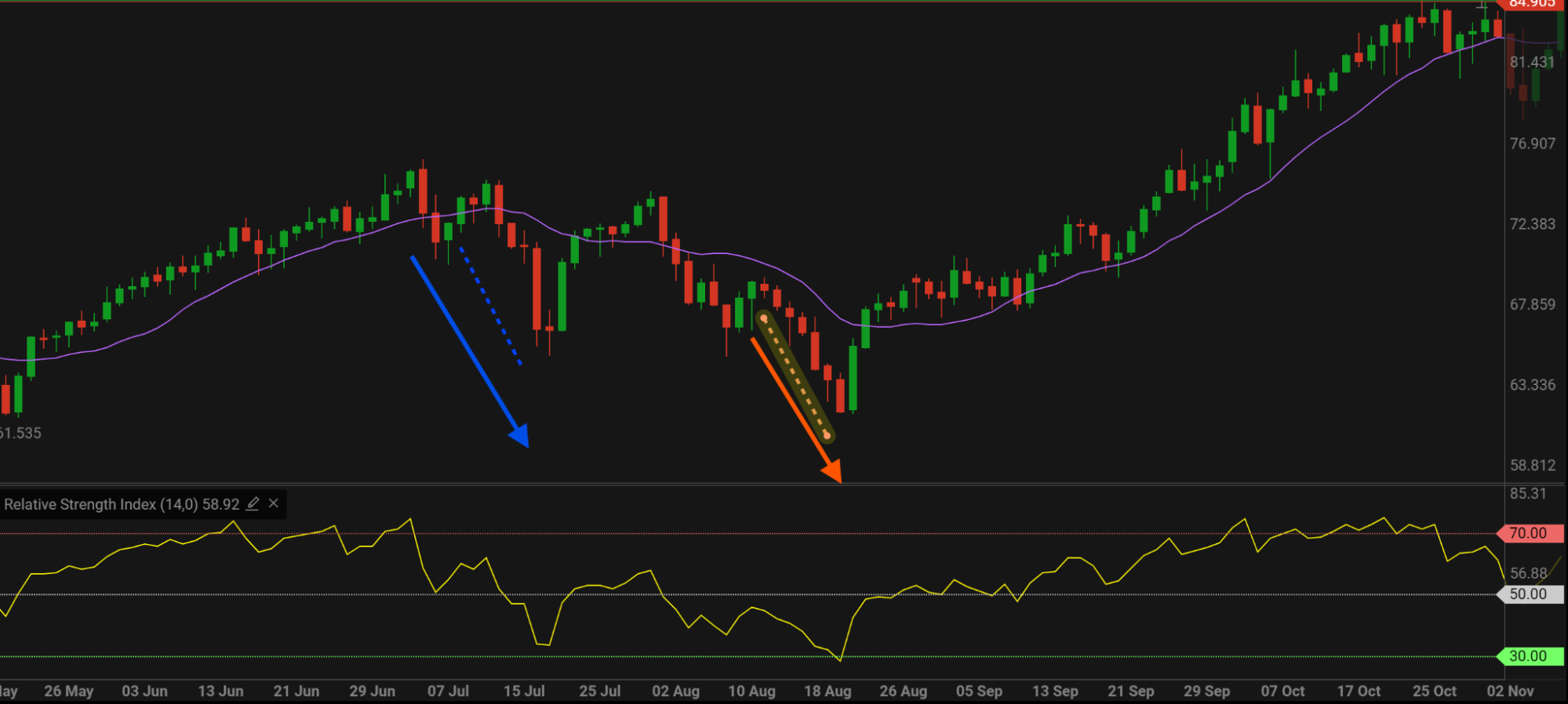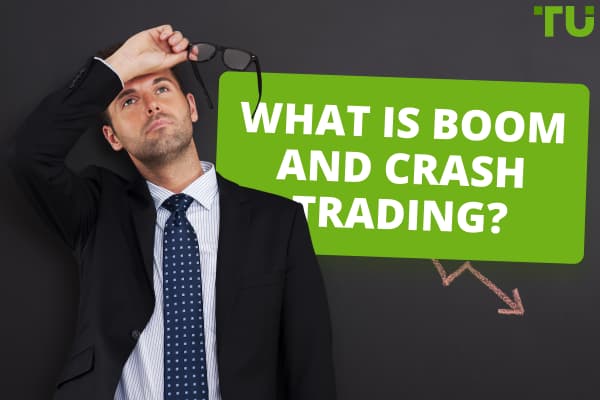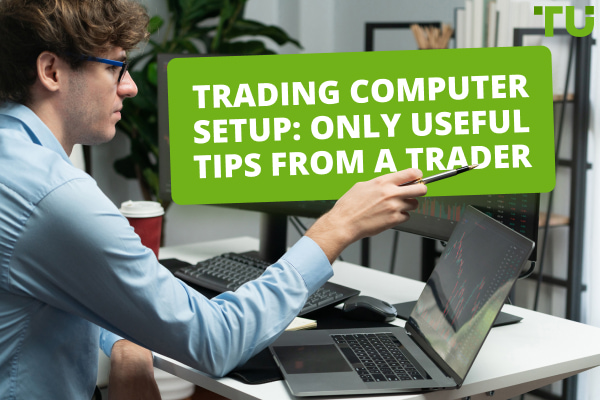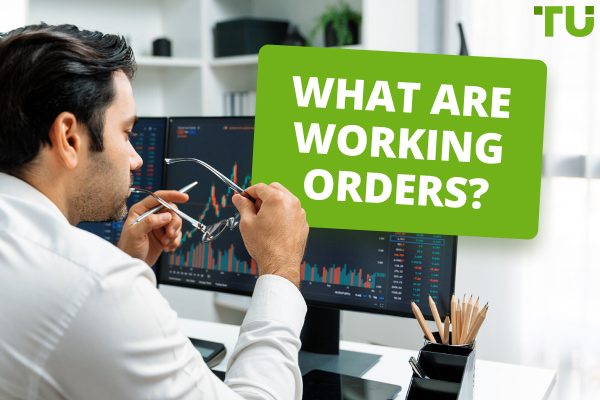Top Futures Algorithmic Trading Strategies | Definition And Examples
Top futures algorithmic trading strategies:
Algorithmic trading can be a profitable strategy in the futures trading market, where traders must buy or sell an asset on a specified date and price. Algorithmic trading, characterized by the automated execution of trading instructions based on predefined criteria such as time, price, and volume, offers significant advantages but demands meticulous preparation. While algorithmic trading minimizes slippage by executing orders precisely according to predefined parameters, successful implementation hinges on a well-crafted futures trading strategy.
By marrying algorithmic precision with strategic foresight, traders can navigate the futures market with confidence and efficiency, harnessing the power of automation to capitalize on market opportunities while mitigating risks. Hence, understanding the top futures trading strategies becomes imperative, and TU experts will provide traders with the best futures algorithmic trading strategies. Read on.
-
How to choose the best futures algorithmic trading strategy?
You are starting on the right path if you choose a suitable strategy engine and broker, comprehend the costs and commissions involved, and have strong network access, financial market knowledge, and coding capabilities. With this awareness, you can generate the best strategy or know the best tactics to integrate after evaluating factors such as market conditions, risk tolerance, and desired trading frequency. However, to choose the best futures algorithmic trading strategy,
-
Determine your trading goals while envisioning the results you want
-
Research various algorithmic trading strategies to understand their characteristics and suitability
-
Backtest the selected strategies using historical data
-
Optimize the strategy parameters and implement robust risk management practices to protect your capital
-
-
Is algo trading profitable?
The more methodical and disciplined approach to trading that algorithmic trading offers makes it potentially profitable. Importantly, the efficacy of an algorithmic trader depends on several factors, including risk management, market conditions, and strategy execution.
-
Is algo trading difficult?
Algo trading can be challenging due to the complexity of developing and maintaining effective strategies, as well as the need for continuous monitoring and adjustment. Although there are software applications that eliminate the requirement for programming expertise, difficulties may arise if you have never programmed before. The main challenge in algo trading lies in consistently producing something profitable. You can have numerous tactics that, while they function well in theory, in actuality fall short.
-
What are the steps to success in algorithmic futures trading?
Success in algorithmic futures trading requires thorough strategy testing, risk management, staying updated with market trends, and continuous learning and adaptation. Gaining programming knowledge will improve your ability to think logically, which is necessary when choosing how to carry out your trading plan.
Best futures algorithmic trading strategies
While different traders have their own basis and focus when trading, what a trader sees as the best futures trading strategies might be different for another trader. Some futures algorithmic trading strategies use technical, fundamental, or both analyses to determine the best times to buy or sell contracts. Some of the best futures algorithmic trading strategies are listed below.
Trend following

Trend following chart example
Among the common futures algorithmic trading strategies that novice and professional traders employ is the “following trends strategy.” This strategy involves trading along recognized market trends after identifying them. Technical indicators are used to establish the direction of the trend and set stop-loss orders to minimize risk, giving traders utilizing the following trend clear entry and exit points. "Due to its adaptability as an algorithm that can analyze price movements and indicators to detect trends and execute trades, this strategy is primarily favored by futures algorithmic traders."
The fundamental concept underlying trend-following algorithms is to initiate long trades during uptrends (increasing prices) and short trades during downtrends (decreasing prices). These algorithms analyze past price data to detect trends, often utilizing technical indicators such as moving averages or the Directional Movement Index (DMI). Upon identifying a trend, the algorithm executes a trade aligned with the trend's direction, intending to maintain the position until indications of the trend's waning or reversal emerge.
Breakout trading

Breakout trading chart example
“Breakout trading” is another top futures algorithmic trading strategy for traders aiming to profit from new price movements in the futures market. The basic idea behind breakout trading is to enter trades when the price of an asset crosses past support or resistance levels; these events usually coincide with a spike in trading activity. While anticipating a breakout, algo traders seek out levels or regions where security has previously encountered difficulty surpassing. Price breakouts happen when it crosses over any of these marked levels.
Traders can choose to go long or short when an asset's price breaks through its resistance level and falls below its support level. Before planning their entry and exit points, traders must recognize the current price trend patterns by looking out for chart patterns like triangles, channels, heads and shoulders, rectangles, etc. They look for strong momentum, and the breakout serves as a signal to enter the position. Indicators like the relative strength index and Ichimoku Kinko are among the indicators that can be used to identify some of these patterns.
Range Trading

Range trading chart
Range trading is yet another futures algorithmic trading strategy for traders who prefer short trading. This strategy is centered on determining the range or difference between high and low prices. The terminus when using this future trading strategy is to purchase at the lower price point and sell at the higher price point.
This strategy is effective when the market lacks direction and the algo trader can identify the support and resistance levels defining the range. A basic guideline for traders entails identifying the trading range by observing at least two instances of price recovery from a support area and retreat from a resistance zone.
Traders can use oscillators for time range-based entries, and RSI, pivot points, CCI, and stochastics are among the top options. When prices fluctuate within a trading range, CCI and RSI can be used to confirm overbought and oversold conditions, while pivot points aid in identifying resistance and support on different levels. Once established, the simplest trading strategy is to buy near the support level and sell near the resistance.
Momentum trading

Momentum trading chart example
“Momentum trading” stands out as one of the top strategies in futures algorithmic trading, as it focuses on profiting from the ongoing trends in market prices. The fundamental idea driving this strategy is that assets that have recently experienced substantial price movements, whether upward or downward, are likely to continue moving in the same direction for a period of time. Algorithms for momentum trading are designed to spot these trends, enter trades in line with the momentum, and exit when the trend begins to weaken.
When incorporating this strategy, traders typically buy or sell an asset that is trending strongly in one direction and exit the trade when signs of a reversal appear. They aim to avoid trading assets that are moving sideways. The goal is to take advantage of short-term positions to benefit from market volatility within the context of a prevailing trend. To execute momentum-based algorithmic trading, traders analyze historical price data to identify assets that have experienced significant price changes over a specific period. Indicators like RSI, moving averages, and momentum help in identifying the best entry and exit times. The momentum indicator, for instance, determines trend strength by comparing the most recent closing price to the previous one.
News Trading

News trading chart
Since traders base their trading decisions on their predictions of how news and significant economic events will affect market sentiment, the news trading strategy appears to be different from the above futures trading strategies. When important economic news breaks, the algorithmic trader assesses its impact on asset prices and opens positions where this impact becomes noisy. This feature distinguishes news trading as primarily event-driven, differentiating it from traditional technical and fundamental trading methodologies.
The algorithm keeps track of significant news events and is programmed to profit from the ensuing volatility through potential trading gains. News traders only pay attention to signals that the market generates in response to triggering events. As a result, it is crucial to evaluate all underlying political, social, and economic factors influencing an asset's value. Trades can be carried out in advance, during, or following the news release, and their efficacy can be increased by incorporating technical analysis. When determining the best price levels to target before, during, and after a news event, tools such as oscillators and technical indicators such as moving averages and pivot points can help.
Pullback Strategy

Pullback trading chart
A pullback strategy is employed when the aim is for an algo trader to profit from a minor reversal in the market price that runs counter to the current trend. Here, the trader can buy assets when an upward trend is briefly decreasing or sell them when a downward trend is briefly increasing, hoping that prices will return to the initial trend. This futures trading strategy is used if a trader prefers to enter the market when prices are declining in expectation of an increase in the future.
To enter trades in the direction of the current trend, you must first identify the trends, set your pullback criteria, wait for a pullback, and confirm any potential reversals when they happen. The Relative Strength Index is a good example of a technical indicator that can be used to spot pullbacks (RSI), as it measures the strength of a stock's price action. The stock is oversold and may soon see a pullback when the RSI falls below a given threshold (e.g., 30). The premise behind this strategy is that futures prices undergo periodic retracements, which are brief price reversals that eventually resume their original course instead of moving linearly.
An example of futures algorithmic trading
Algo futures trading, which demands that a trader use computer programs to make trading decisions, requires you to create an algorithm that automatically buys when the price of an asset falls below a certain level on your strategy engine connected to your broker.
For example, you can develop an algorithmic trading strategy for trading E-mini S&P 500 futures contracts. The strategy can be integrated based on a combination of technical indicators like moving averages, relative strength index (RSI), and Bollinger bands. The algorithm would monitor the price movements of the E-mini S&P 500 futures and generate buy or sell signals based on predefined conditions. For instance, the algorithm would produce a sell signal if the price was above the upper Bollinger Band and the RSI crossed above 70. On the other hand, if the price was below the lower Bollinger Band and the RSI crossed below 30, the algorithm would produce a buy signal. The algorithm would immediately execute a trade upon generating a signal.

Futures trading example
Key Takeaways:
-
You need a strategy engine (NinjaTrader, MetaTrader 4, etc.), which is where you build the logic before connecting to your broker through a bridge
-
The algorithm must include risk management measures, such as setting stop-loss orders to limit potential losses
-
While algorithmic trading in futures involves using computer programs to make trading decisions automatically, the algorithm's efficiency depends on the trading strategy
-
The algorithm generates buy or sell signals based on the defined conditions. For example, it might buy when the price falls below a certain level and sell when it exceeds a certain threshold
-
Before deploying an algorithmic trading strategy in live markets, it's essential to backtest it using historical data to evaluate its performance and ensure its effectiveness
-
Even though algorithmic trading is automated, keep an eye on the markets and the algorithm's performance to make any necessary modifications
Best brokers for futures automated trading


How do you succeed in futures algorithmic trading?
Succeeding in futures algorithmic trading involves a combination of technical expertise, disciplined strategy development, risk management, and adaptability. While you will need sufficient funds to trade with, you will also need a trading algorithm (this algorithm can be based on technical indicators, fundamental analysis, or other quantitative methods) or strategy that defines when to buy or sell. Additionally, you will need to know how to code your algorithm using Python, R, or other programming languages. Given that some algorithmic trading platforms offer visual interfaces for creating algorithms without the need for coding, this might not be a big deal.
Ensure that the broker you select allows automated trading and offers reliable execution, low latency, and support for your chosen markets. Understanding and complying with the regulatory requirements of the markets you're trading in, including rules related to algorithmic trading and automated trading systems, are paramount.
Here's a breakdown of key aspects to focus on if you are a beginner:
-
Develop robust trading strategies based on thorough research and analysis. This may involve quantitative analysis, statistical modeling, machine learning techniques, or other algorithmic approaches. Your algorithm must have access to accurate and current market data to make wise trading decisions. This data can include price quotes, volume, and other relevant information
-
Before deploying your strategy in live markets, rigorously backtest it using historical data. This helps evaluate its performance across various market conditions and time periods, uncover weaknesses, and optimize parameters.
-
Implement effective risk management practices to protect your capital. This includes setting stop-loss levels, position sizing based on risk tolerance, diversification across assets or strategies, and monitoring for potential drawdowns.
-
Ensure you have a reliable and efficient technology infrastructure for execution, data processing, and analysis. Low-latency connectivity, robust servers, and advanced software tools are essential for handling high-frequency trading strategie
-
Continuously monitor market conditions, news events, and economic indicators that may impact futures prices. Maintain emotional discipline and avoid impulsive decisions based on fear or greed. Stick to your trading plan, follow predefined rules, regularly evaluate the performance of your trading strategies, identify areas for improvement, and iterate on them
Pros and cons of futures algorithmic trading
Algorithmic trading in futures markets offers several advantages and disadvantages:
👍 Pros
• Futures algorithmic trading can execute trades at high speeds, taking advantage of market opportunities that may only exist for milliseconds
• Futures algorithmic trading ensures the execution of trades with precision, reducing the risk of human error
• Traders can backtest algorithms using historical data to evaluate their performance before deploying them in live markets
• Algorithmic trading allows traders to diversify their strategies across multiple futures markets and instruments
• It ensures 24/7 trading, which means traders can take advantage of opportunities at all times, regardless of the time zone
👎 Cons
• Algorithmic trading system development and maintenance can be challenging and call for sophisticated programming abilities. Since algorithmic trading depends on technology, any hiccups or malfunctions could result in large losses
• Even though algorithms can be made to manage risk, they are still susceptible to market risks. Furthermore, since trading strategies are subject to regulations, modifications to those regulations may impact them
• Algorithmic trading system setup can be costly, involving expenditures on infrastructure, data feeds, and software
• Technology is necessary for algorithmic trading, including computer programs and fast internet connections. Technical problems or malfunctions have the potential to stop trading and cause losses
Is futures algorithmic trading legal?
Indeed, algorithmic trading is permissible under the law. There are no specific restrictions or statutes that prohibit the utilization of trading algorithms. While some market participants argue that algorithmic trading can lead to an inequitable trading landscape that negatively affects markets, there are established regulations and principles that traders and entities must abide by. In numerous jurisdictions, oversight of algorithmic trading in futures markets falls under the purview of financial regulatory authorities to maintain fair and well-ordered markets. Traders and entities involved in algorithmic trading are typically obligated to uphold specific standards and protocols, including risk management, algorithm validation, and adherence to market regulations.
Expert Opinion
Traders who wish to trade futures should first obtain a solid understanding of trading principles and market dynamics before experimenting with these strategies, even though algorithmic trading may be a more profitable alternative to trading in a variety of financial markets. It is essential to comprehend fundamental ideas on programming languages, financial market analysis, trade execution, and risk management strategies. Once you are familiar with many of these ideas, use demo accounts or small trading capital to test out basic algorithmic strategies. Pay attention to how you can learn from your trades and keep improving your tactics in light of the outcomes.
Joining trading communities will also help you avoid common pitfalls and learn from experienced traders. Always be inquisitive and receptive to new ideas because algorithmic trading is an ongoing learning process. If you are consistent in your trading and put in the necessary effort, you can eventually develop profitable algorithmic trading strategies that suit your goals and trading style.
Conclusion
Algorithmic trading strategies, with their notable speed and accuracy, have significantly changed the trading landscape. However, the trader has the final say in terms of how the algorithm is set up and how to create trading plans that optimize returns.
Glossary for novice traders
-
1
Trading
Trading involves the act of buying and selling financial assets like stocks, currencies, or commodities with the intention of profiting from market price fluctuations. Traders employ various strategies, analysis techniques, and risk management practices to make informed decisions and optimize their chances of success in the financial markets.
-
2
Broker
A broker is a legal entity or individual that performs as an intermediary when making trades in the financial markets. Private investors cannot trade without a broker, since only brokers can execute trades on the exchanges.
-
3
Algorithmic trading
Algorithmic trading is an advanced method that relies on advanced coding and formulas based on a mathematical model. However, compared to traditional trading methods, the process differs by being automated.
-
4
Risk Management
Risk management is a risk management model that involves controlling potential losses while maximizing profits. The main risk management tools are stop loss, take profit, calculation of position volume taking into account leverage and pip value.
-
5
Breakout trading
Breakout trading is a trading strategy that focuses on identifying and profiting from significant price movements that occur when an asset's price breaches a well-defined level of support or resistance.
Team that worked on the article
Peter Emmanuel Chijioke is a professional personal finance, Forex, crypto, blockchain, NFT, and Web3 writer and a contributor to the Traders Union website. As a computer science graduate with a robust background in programming, machine learning, and blockchain technology, he possesses a comprehensive understanding of software, technologies, cryptocurrency, and Forex trading.
Having skills in blockchain technology and over 7 years of experience in crafting technical articles on trading, software, and personal finance, he brings a unique blend of theoretical knowledge and practical expertise to the table. His skill set encompasses a diverse range of personal finance technologies and industries, making him a valuable asset to any team or project focused on innovative solutions, personal finance, and investing technologies.
Dr. BJ Johnson is a PhD in English Language and an editor with over 15 years of experience. He earned his degree in English Language in the U.S and the UK. In 2020, Dr. Johnson joined the Traders Union team. Since then, he has created over 100 exclusive articles and edited over 300 articles of other authors.
Mirjan Hipolito is a journalist and news editor at Traders Union. She is an expert crypto writer with five years of experience in the financial markets. Her specialties are daily market news, price predictions, and Initial Coin Offerings (ICO).











